2016 Acura NSX: First Look


Competes with: Audi R8, BMW i8, Nissan GT-R
Looks like: The real, real deal for real this time
Drivetrain: More than 550-hp, twin-turbocharged V-6 engine and three electric motors with nine-speed dual-clutch transmission; all-wheel drive
Hits dealerships: Late 2015
The Acura NSX is a legend in sports car circles, and after using previous North American International Auto Shows to show concept versions of a potential successor, Acura has finally revealed the production model at the 2015 Detroit auto show.
More 2015 Detroit Auto Show Coverage
The brand was tight-lipped on performance details, but it did say the NSX will be powered by an all-new twin-turbocharged V-6 engine and three electric motors when it goes on sale late this year.
Exterior
With many concepts, the transition to a production model is often a letdown. The design cues that made the concept cool are often lost or watered down when it actually has to be mass-produced. That’s not the case with the NSX, which still looks just as exotic as the first NSX concept did back in 2012.
Part of the reason is the NSX isn’t your average production car, but it also goes back to the mid-engine layout that helps establish its proportions. The front end is dominated by gaping inlets and features Acura’s signature multi-element headlights, but the car also has what may be the most minimalist version of the brand’s shield grille to date. It looks more like the end of a scythe than a shield, and it works well here. Prominent design cues like the side intakes and C-pillars send air to the V-6 engine and over the rear deck for greater downforce, respectively.
The NSX is built using exotic materials for both stiffness and weight savings. The car uses a space frame made of aluminum and ultra-high-strength steel that’s connected to a carbon-fiber floor pan. The body, meanwhile, consists of aluminum and composite panels.
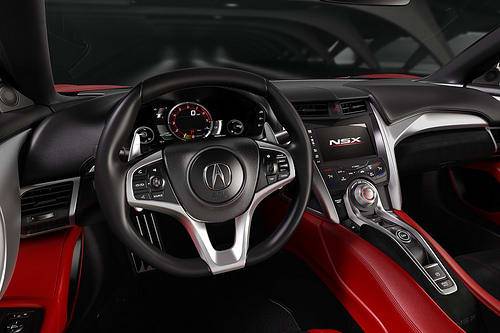
Interior
By supercar standards, the NSX’s cabin is very approachable; there are familiar Acura controls on the doors, steering wheel and dashboard. Some things haven’t been assimilated from more mundane Acura vehicles such as the dashboard’s dual-screen setup that’s in the MDX crossover and RLX sedan.
Upscale treatments include a handcrafted leather dash panel and a screen in place of a traditional gauge cluster. Information on the screen changes with the Integrated Dynamics System modes.
IDS is operated by a large knob below the dashboard touch-screen and includes four modes: Quiet (electric-only operation at low speeds for short distances), Sport, Sport+ and Track. IDS manages engine loudness and engine, electric motor, transmission and chassis behavior.
Acura says the car’s thin A-pillars and low-mounted instrument panel enhance driver visibility.
Under the Hood
Acura supplied the barest details regarding what you probably want to know most about: the NSX’s performance. Horsepower, torque, fuel efficiency and performance specs weren’t provided specifically, though one Acura spokesman told us it would have more than 550 horsepower.
Much like the original NSX concept, the production NSX’s front wheels are each driven by their own electric motor, which enables side-to-side torque distribution. There’s also a third electric motor between the engine and transmission that helps accelerate and brake the car and also supports shifting performance, according to Acura. The electric motors for the front wheels and engine/motor combination for the rear wheels gives the NSX all-wheel drive, which Acura terms Sport Hybrid Super-Handling All Wheel Drive or Sport Hybrid SH-AWD for short.
The all-new twin-turbocharged V-6 engine has a dry-sump lubrication system and a compact valvetrain for a lower center of gravity. The nine-speed dual-clutch transmission is operated by steering-wheel shift paddles and uses downshift rev-matching for smoother gear changes. A launch control feature is included.
Stopping duties are handled by six-piston front and four-piston rear calipers that grip carbon-ceramic brake discs. The car gets 19-inch front and 20-inch rear wheels, and the rear wheels are relatively wide at 11 inches.
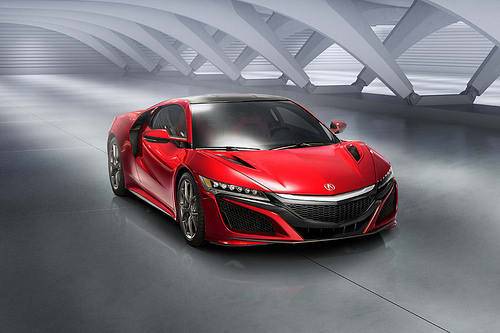

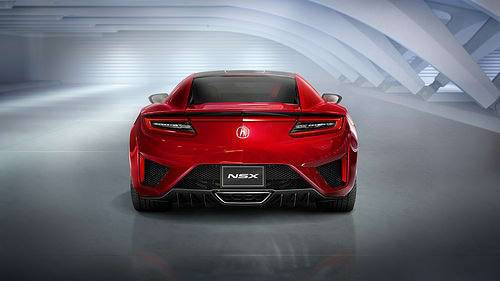
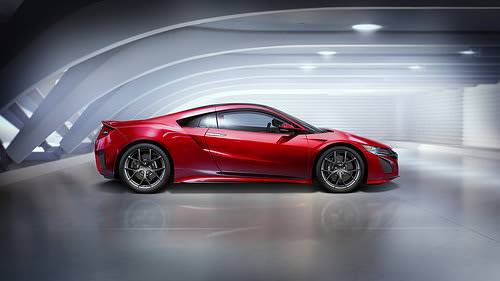
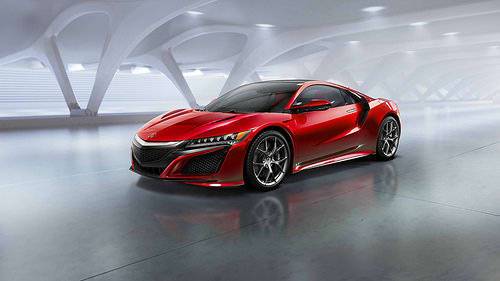
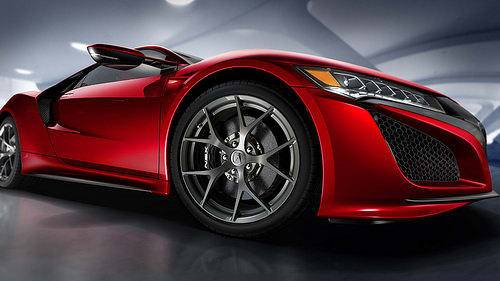
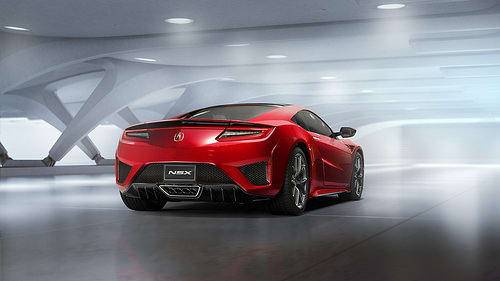



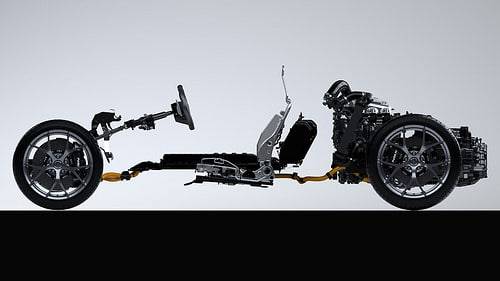

Manufacturer images

Mike Hanley has more than 20 years of experience reporting on the auto industry. His primary focus is new vehicles, and he's currently a Senior Road Test Editor overseeing expert car reviews and comparison tests. He previously managed Editorial content in the Cars.com Research section.
Featured stories




